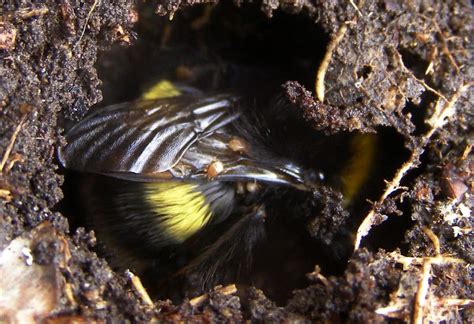Have you ever wondered what bumble bees do when winter comes around? Do they simply disappear, or do they stick it out and brave the cold temperatures? Well, if you’ve been curious about this buzzing insect’s behavior during the winter months, you’re in luck! In this article, we’ll explore the habits of these furry little creatures during the colder seasons. So, let’s dive in and find out just what bumble bees are up to when winter rolls around!
What do Bumble Bees Do in the Winter?
Bumble bees are one of nature’s most fascinating creatures, and their habits during winter months are just as interesting. It’s not uncommon to find bumblebees out and about during the colder months, but what exactly are they doing? Let’s take a look at how bumblebees survive the winter and what role they play in our environment.
Hibernation
One of the main ways that bumblebees survive the winter is through hibernation. During this time, the bees enter a state of dormancy where they reduce their metabolic rate and conserve energy until the weather warms up again. During this period, the bees will remain hidden away in nests or burrows underground, often staying there for several months at a time.
When the weather begins to warm up, the bumblebees will emerge from their hiding places and begin to search for food and water. This is an important part of their survival strategy, as it helps them to build up their strength before the summer months arrive.
Pollination
Another way that bumblebees help to keep our environment healthy is through pollination. During the spring and summer months, bumblebees can be found buzzing around flowers and other plants, collecting nectar and pollen. As they move from flower to flower, the bumblebees spread pollen which helps fertilize the plant so it can produce fruits and vegetables. Without bumblebees, many of these plants would struggle to reproduce and would eventually die off.
Adaptability
The final thing that makes bumblebees so amazing is their adaptability. Despite living in cold climates, bumblebees have evolved to survive even the harshest winters. They can endure temperatures below freezing by huddling together in their nests and using each other’s body heat to stay warm. They also have a thick coat of fur which helps to insulate them against the cold.
Conclusion
Bumblebees may seem like small and insignificant creatures, but they actually play a vital role in keeping our environment healthy. Through hibernation, pollination, and their remarkable adaptability, bumblebees are able to survive even the coldest winters. So the next time you see a bumblebee in the winter, remember that it is helping to keep our planet alive!
“Bzzz-ing Through the Winter: How Bumble Bees Survive Cold Months”
- Hibernate
- : Bumblebees hibernate during the winter months, usually from October to March. They will seek shelter in a warm, dry area such as an attic or under a pile of leaves and enter a state of dormancy until warmer weather arrives.
- Conserve Energy
- : During hibernation, bumblebees conserve energy by slowing their metabolism and reducing their body temperature. This allows them to survive the cold winter months without having to expend too much energy.
- Gather Nectar
- : In the spring, when temperatures begin to rise, bumblebees emerge from hibernation and begin to gather nectar and pollen from flowers. This is necessary for them to build up their strength after a long winter of dormancy.
- Build Colonies
- : Once they have gathered enough food, bumblebees will start to build colonies. These colonies are made up of worker bees, drones, and a queen bee. The queen bee will lay eggs which will eventually become new worker bees and drones.
- Pollinate Plants
- : Bumblebees play an important role in pollinating plants. As they move from flower to flower gathering nectar and pollen, they spread pollen grains which help fertilize plants and allow them to reproduce.
- Produce Honey
- : While most people think of honey bees when they think of honey production, bumblebees also produce honey. It is not as sweet as honey produced by honey bees, but it still has its uses.
- Defend Their Colony
- : Bumblebees are very protective of their colonies and will defend them against intruders if necessary. They can sting multiple times and their stings are quite painful, so they should be handled with caution.
Bid Bumble Bees Adieu: A Look at Their Winter Habits
So there you have it! Bumble bees in winter are busy preparing for the spring and summer months. They hibernate, conserve energy, store food, and huddle together to keep warm. These fascinating creatures are hard-working all year round, and without them, our environment would suffer greatly. So next time you see a bee buzzing around your garden or backyard, give them a nod of appreciation – they’re doing their part to help us all out!
Q&A
Bumble bees don’t eat much in the winter since they hibernate. They mainly rely on honey and nectar from the summer months to survive. In rare cases, bumble bees may feed on sap or pollen if available.
Bumble bees survive cold weather by clustering together to keep warm, using their wings to generate heat, and relying on their stored honey for energy.
Bumble bees don’t hibernate, so they usually just hide away in sheltered spots like hollow trees or thick shrubs. They’ll form clusters to keep warm and try to survive the cold weather!
Nope! Bumble bees are active all year round, even in the winter. They don’t hibernate like some other types of bees do. So you’ll still see them buzzing around during the cold months!




